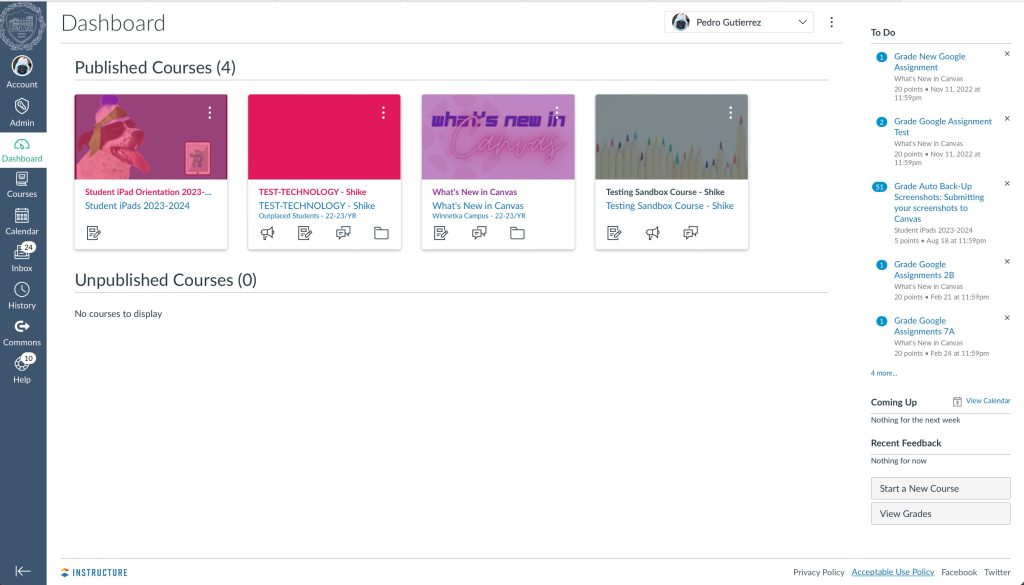Canvas Onboarding Initiative
Competencies: Instructional Technology, PD, Canvas

Background
By 2017, our institution began to wind down support for several LMS, learning management systems, to a single platform, Canvas, in response to expansion of our 1:1 device initiative (MLP). The institution’s hands-off approach to regulating and standardizing teacher practices in the classroom meant that adoption rates for Canvas were low. Utilization was defined by the institution as having a presence on Canvas, where students could get information about the course, including office hours and a syllabus. Of the 431 faculty, only about 34% had a “presence”, and of those, only about 19% were utilizing Canvas activities, such as assessment and feedback tools.
There were attempts to improve those numbers after several snow days in 2018 forced administrators to consider Canvas as a tool to record attendance via course participation. Additionally feedback from surveys we conducted pointed to a lack of consistency in platform use between teachers to be an issue for students. A real push to onboard faculty onto Canvas began in earnest in early 2020, not due to administrative demands or student needs, but a once in a lifetime pandemic forcing faculty teach remotely.
Objectives
In early February 2020, there was a roughly three week period were contingency plans were being drawn up in the likelihood of a school closure due to COVID. The instructional technology team worked with administrators to formalize a PD plan for staff and faculty in the event that remote instruction was necessary. We procured a district Zoom license and worked with our network and enterprise application teams to provision accounts and remotely push out apps to our users. We identified subject matter experts in different departments within our institution to determine and solidify workflow practices conducive to remote learning and set a plan in action to:
- Develop a communication strategy outlining standards for remote learning that included best practices for attendance, activities, and Zoom use. These standards, once approved by administration, outlined the necessary baseline that every teacher would have to follow as it related to their Canvas “presence”.
- Identify and provide professional development to staff and faculty without any discernible Canvas “presence”.
- Lead group professional development sessions to ensure faculty is prepared should the need for remote learning arise.
- Design documentation for using Zoom to hold and join meetings tailored to staff, faculty and students. This documentation could be repurposed by faculty to quickly onboard students with minimal loss of instruction time.
Outcomes
In the span of three weeks we, the instructional technology team, managed to:
- Identify core workflows that would benefit remote instruction.
- Provide the majority of faculty with no Canvas “presence” PD on creating their courses, posting daily assignments as means of attendance, and creating recurring Zoom meetings for their class(es).
- Engage faculty in additional remote PD sessions on student engagement, Zoom and Canvas best practices throughout the pandemic.
Individually, I also worked with departments to design a workflow of asynchronous learning using iPads to create learning videos that students could follow at their own pace. This was especially useful in the math and science departments. For example, teachers could use their iPad to record video walkthroughs for solving example equations and link to them in the worksheets in Canvas, providing students with additional support and context. This workflow and the video library generated by faculty are still used as learning aides to this day.
As a whole, we managed 100% compliance, onboarding every faculty member without a Canvas “presence” to have daily assignments and key information in their courses. Given the time constraints and general nature of the situation making teaching and learning difficult, I think we did well in putting faculty in a position to be successful. We felt our work was especially impactful when in year-end survey, we received feedback from students thanking us. Every one of their teachers finally had course content on Canvas, and the organization between courses was generally similar.